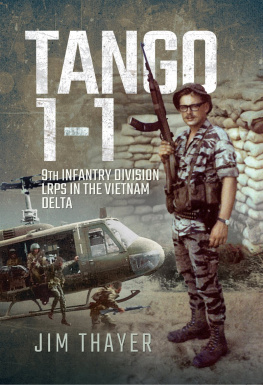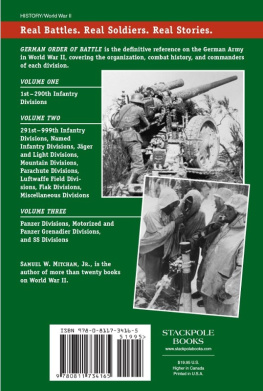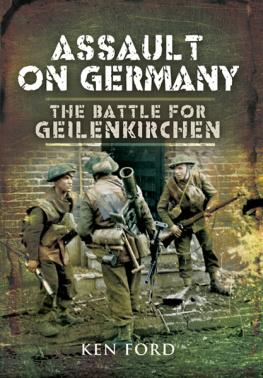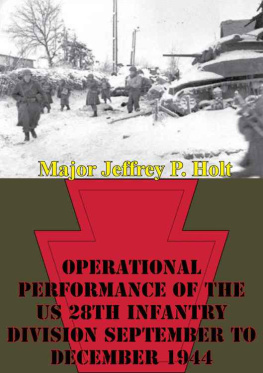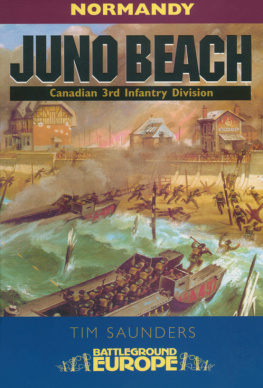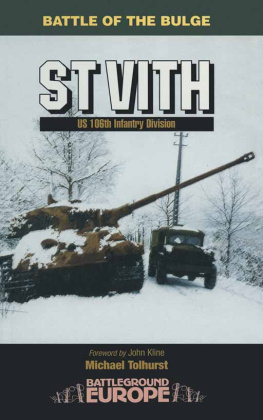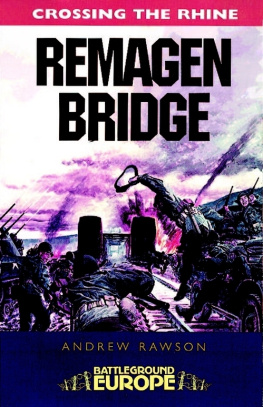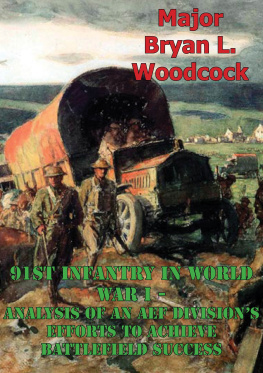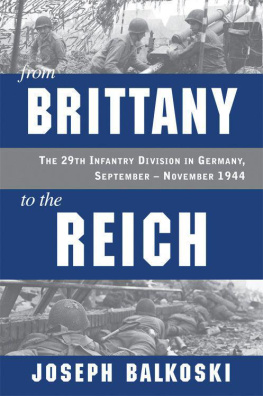
EUMENES Publishing 2019, all rights reserved. No part of this publication may be reproduced, stored in a retrieval system or transmitted by any means, electrical, mechanical or otherwise without the written permission of the copyright holder.
Publishers Note
Although in most cases we have retained the Authors original spelling and grammar to authentically reproduce the work of the Author and the original intent of such material, some additional notes and clarifications have been added for the modern readers benefit.
We have also made every effort to include all maps and illustrations of the original edition the limitations of formatting do not allow of including larger maps, we will upload as many of these maps as possible.
THE 84 th INFANTRY DIVISION IN THE BATTLE OF GERMANY
November 1944May 1945
By
LT. THEODORE DRAPER
Maps and drawings by SGT. WALTER H. CHAPMAN
Foreword by MAJOR-GENERAL A. R. BOLLING
The 84 th Infantry Division in the Battle of Germany was originally published in 1946 by The Viking Press, Inc., New York.
TABLE OF CONTENTS
Contents
TABLE OF CONTENTS
REQUEST FROM THE PUBLISHER
DEDICATION
* * *
TO THE RAILSPLITTERS WHO NEVER CAME BACK
Foreword
Our army has always fought much better than it has written. In this war, for the first time, a large-scale effort has been made in the various historical sections of the armed forces to gather and organize the material for a permanent record of our many-sided achievement. Most of these historical sections, however, have worked on an army level or higher.
In the 84 th Infantry Division, a unique experiment was attempted. As soon as the division was sent into combat, our own historical section was formed. It was more than a repository for the written records of the division, though that was one of its duties. It was encouraged to go direct to the source, to the men themselves, from the commanding general to any private, for the most complete, firsthand information on every action. This book is largely based on hundreds of pages of such interviews, most of them within 48 hours of the units relief and many of them while the unit was still fighting.
Primarily, this history is meant for the men who made it. In the heat of battle, it is impossible for any man to see all the sides of a battle. Some people see too much of the big picture, some too much of the little ones. To see the whole action, and especially the whole operation, it is necessary to piece together many different types of information and experiences.
In this sense, we owe to every man who fought with us a report of what we did together and why. The war was a tremendous experience for all of us, and it will enrich that experience to get a full understanding of it.
I should like to stress what we did together. If there is a hero in this book, it is the division as a whole. If there are many heroes, they are the various units of the division. The American soldier is peculiar in this respect. In a story of any action, he likes to see his division mentioned by name, his regiment, his battalion, and above all, his company or battery. If Company K of the 3 rd Battalion of the 333 rd or 334 th or 335 th Infantry took a town, he wants to see the credit go where it belongs. If he was a member of that company or battery, he would feel cheated if it were left out. He does not care so much about his own name but he does insist on the name of his unit.
This book has been written with that in mind. The general reader may find the units a bit abstract but he should remember that they are dear and precious to the men who were in them.
The Infantry Division
A brief note on infantry organization may be helpful to the non-military reader.
A modern infantry division has approximately 14,000 men. About 60 per cent are infantrymen; the rest are artillery men, engineers, medical aid men, reconnaissance troops, signal men, quartermaster and ordnance men. It is therefore a much more balanced force than the name may imply.
In addition, special units, such as tanks, tank destroyers, and anti-aircraft, may be attached to the division for specific missions. These function as an integral part of the division as long as they are with it. It is therefore a much greater striking force than the name may imply.
Below the division level the units are:
REGIMENT. Three infantry regiments and the division artillery are the main units of the division. A regiment has approximately 3,000 men.
BATTALION. Three battalions and four separate companies make up one regiment. A battalion has approximately 850 men.
COMPANY. Five companies make up one battalion. The companies include three rifle companies, one heavy weapons company, and one headquarters company. A company has approximately 180 men.
BATTERY. In the artillery, the battery corresponds to the company in the infantry, but a battery has only approximately 100 men.
PLATOON. Four platoons make up one company. A platoon has approximately 40 men.
SQUAD. Three squads make up one platoon. A squad has 12 men.
Above the division level the units are:
CORPS. Two or more divisions may make up one corps.
ARMY. Two or more corps may make up one army.
ARMY GROUP. Two or more armies may make up one army group.
The Units
If there are any leading characters in this story, they are the units of the Division. In the 84 th Infantry Division, the cast of characters was:
333 rd Infantry Regiment
334 th Infantry Regiment
335 th Infantry Regiment
84 th Division Artillery
325 th Field Artillery Battalion
326 th Field Artillery Battalion
909 th Field Artillery Battalion
309 th Engineer Combat Battalion
309 th Medical Battalion
84 th Reconnaissance Troop
84 th Division Headquarters Company
84 th Quartermaster Company
84 th Signal Company
784 th Ordnance Light Maintenance Company
557 th Anti-Aircraft Artillery Battalion (attached)
638 th Tank Destroyer Battalion (attached)
771 st Tank Battalion (attached)
Introduction
This is a combat history. It is the story of a division from its first day of fighting to its last. To men who were in the line without a break for 171 days, anything in the army before combat is slightly unreal, anything after combat is anti-climax. Nevertheless, most of our men spent two years of their lives in training camps at home before they went overseas. Although the difference between training and combat is vast and sharp, like the difference between reading about dying and dying, those six months would have been impossible without those two years.
This is a brief background of the division before combat. The sights, the sounds, and the smell of war have been left for the fighting story.
The 84 th Infantry Division was born on August 3, 1917, in the War Departments General Order No. 101 which laid the basis for the World War I Army of the United States. Its first commander was Major-General Harry C. Hale, a veteran of the Philippine campaign. Its first G-3 (Operations) was Major (now General) Walter Krueger, commander of the Sixth Army in the Pacific.





